The distance from Seron to Baza is only 31 kilometres but in that stretch it passes through Hijate the highest point on the Great Southern of Spain Railway
By Nick Nutter | Updated 30 May 2022 | Andalucia | History |
Login to add to YOUR Favourites or Read Later
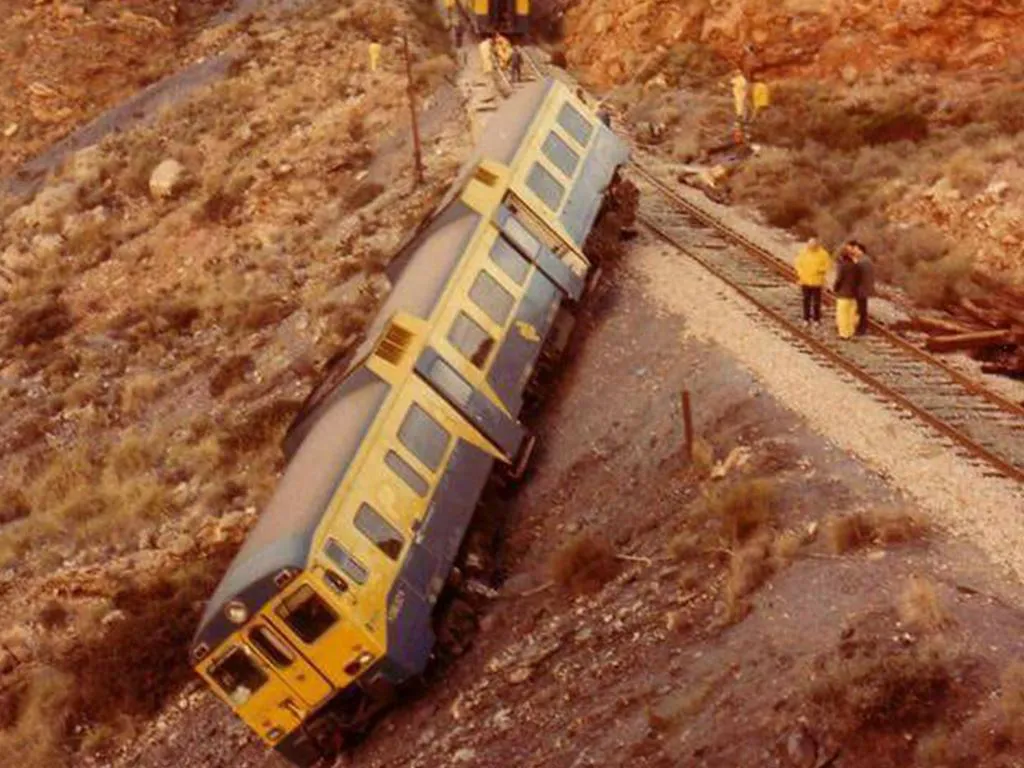
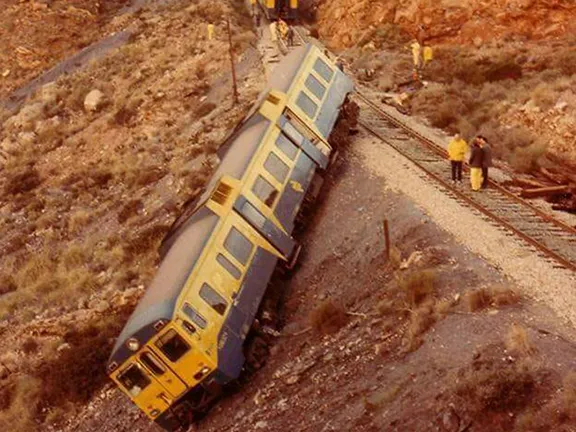
Rail accident January 1985
By the time Seron station opened in September 1894, Gustave Gillman was in overall charge of the construction of the railway. He had a logistical problem, ordering supplies and heavy equipment from northern Europe, transporting it up impassable roads from Aguilas and opening up a 160 kilometres of track in mountainous terrain. A task worthy of the greatest army Generals.
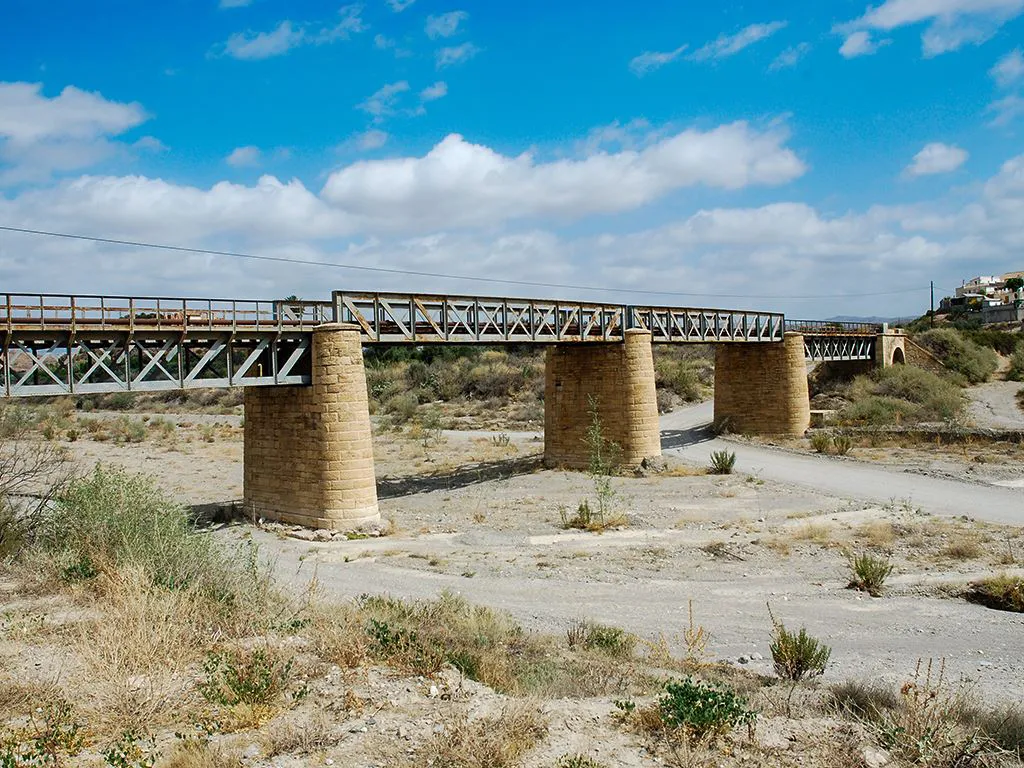
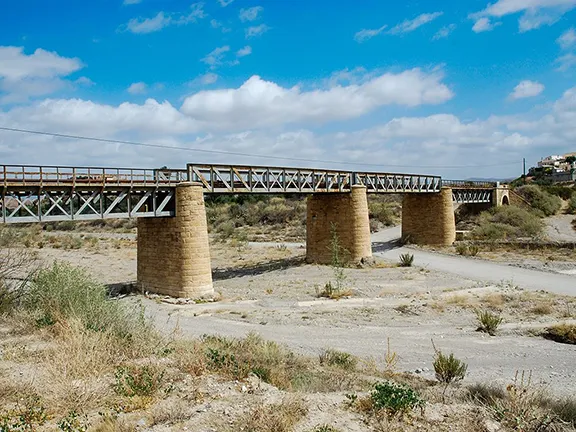
Albox bridge
At the same time he was aware of the financial difficulties faced by the GSSR and was continuously encouraging British investors to open mines in the Sierra Bacarese and the Sierra Filabres as he figured, quite rightly, that the only way the railroad would be profitable was if it carried huge amounts of mineral ore.
In these endeavours he was most successful in the Sierra Bacares. Between 1902 and 1904 the 'Bacares - Serón Ropeway Co. Ltd.' installed a cableway from the Bacares mines known as 'The English' to Serón.
This cable system carried the ore in 480kg buckets at a rate of 120 per hour which brought a total of 500 tons of ore to Serón per day (approximately 175,000 tons per year).
The Serón hopper had a capacity of 3,000 - 4,500 tons, allowing up to a week's worth of ore to be stored.
The ore was then loaded onto GSSR trains whose wagons were specially designed to match the chutes from the hopper to avoid excessive shunting. Each wagon held a load of 35 tons and there were 12 wagons to a train - a total load of 420 tons. With the weight of the rolling stock, each mineral train weighed around 600 tons. And the man instrumental in bring all that together – Gustav Gillman, the Aguilas station master.
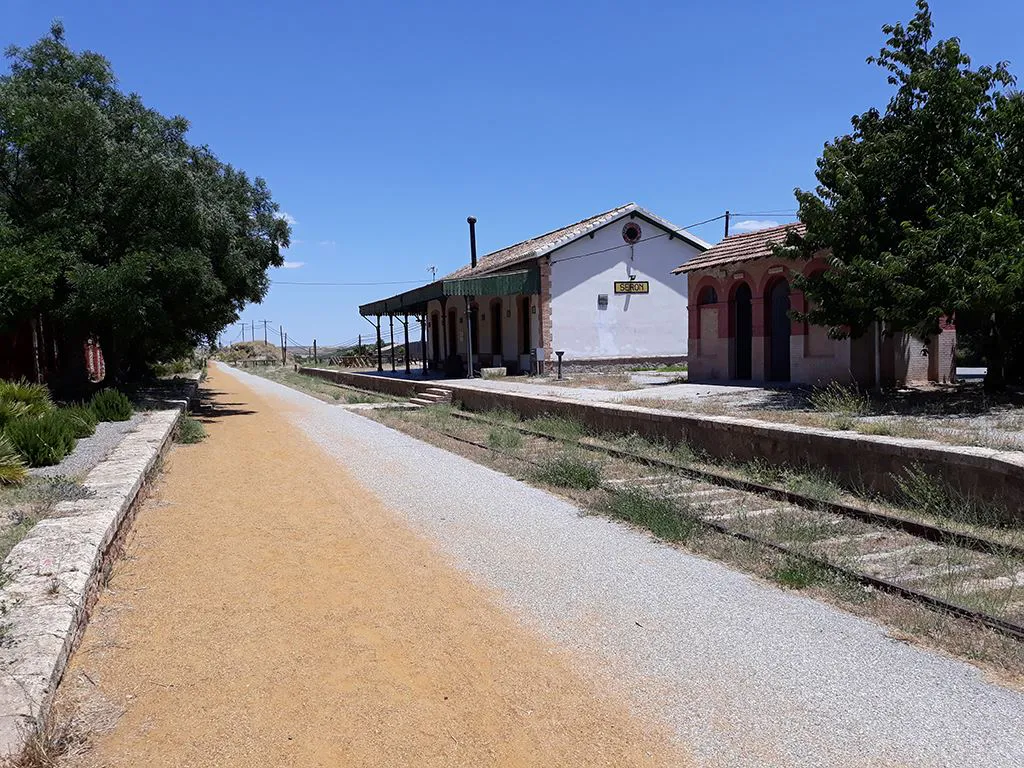
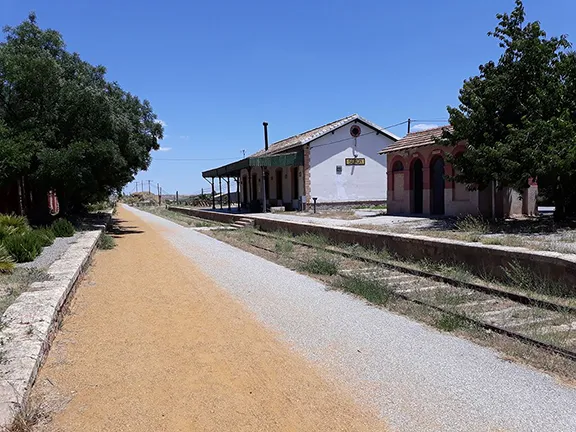
Seron station
Seron became an important passenger hub, transferring miners, workmen and equipment to the village and the Las Menas mining complex, 17 kilometres from Seron in the Sierra Filabres. In addition, goods trains were loaded with sugar beet, esparto grass and other farming products. In 1928 it handled 203,000 tons of freight, most of which was iron ore.
Three months after Seron opened, the line was completed as far as Baza.
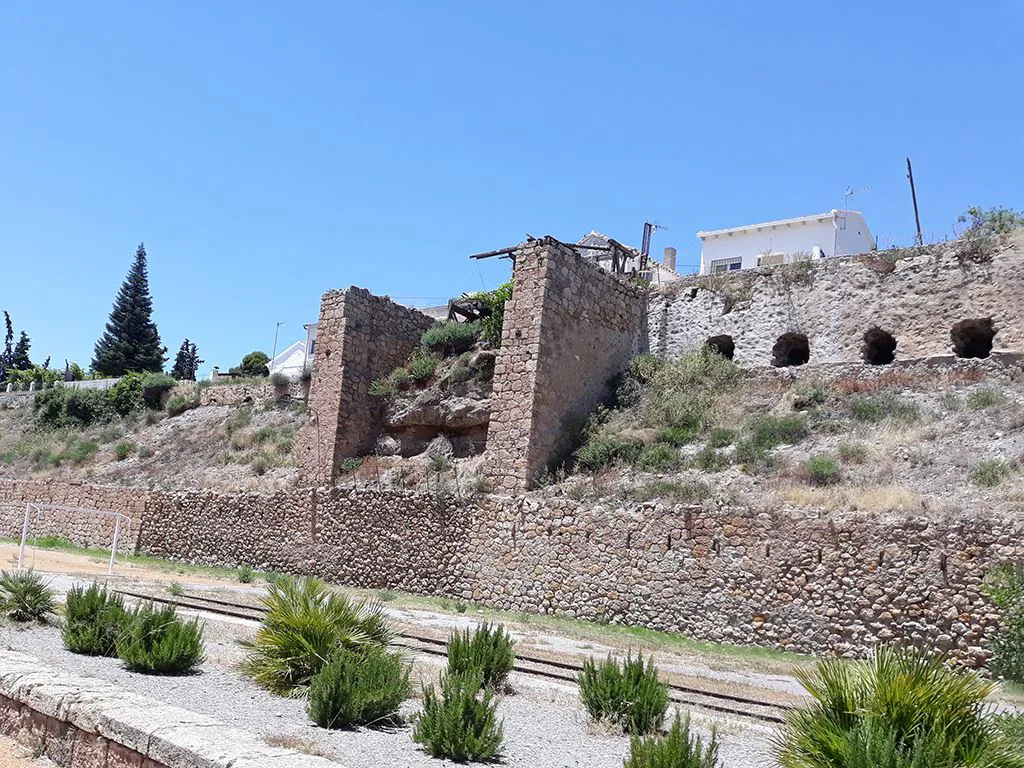
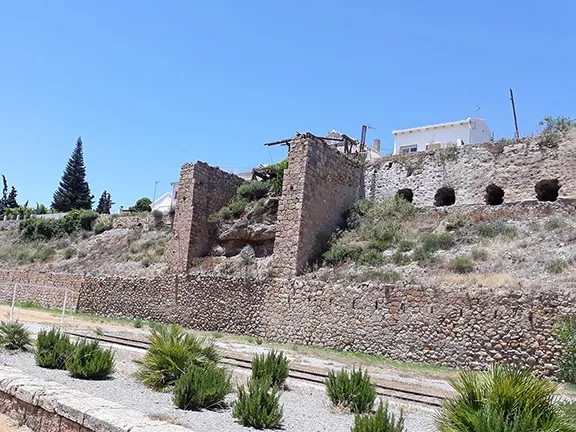
Ore cargadero Seron
The distance from Seron to Baza is only 31 kilometres but in that stretch it passes through Hijate. The small town is 2km away from the station and was unimportant commercially, it. had a small population and little industry to support the station.
However, in the age of steam Hijate was very important as a hub, being the highest point on the whole of the GSSR. This meant that trains coming from Baza to the north or Zurgena to the south were triple headers, especially the goods trains. Triple headers had two locos at the front and one at the rear. These trains were halted at Hijate for two of the locos to be uncoupled to return to their respective stations to start again. In the 61km between Zurgena and Hijate the track rises 710 metres, and between Caniles, the next station towards Baza, and Hijate 141 metres. These were important inclines in the days of steam. It must have been an impressive sight watching a triple header under full steam.
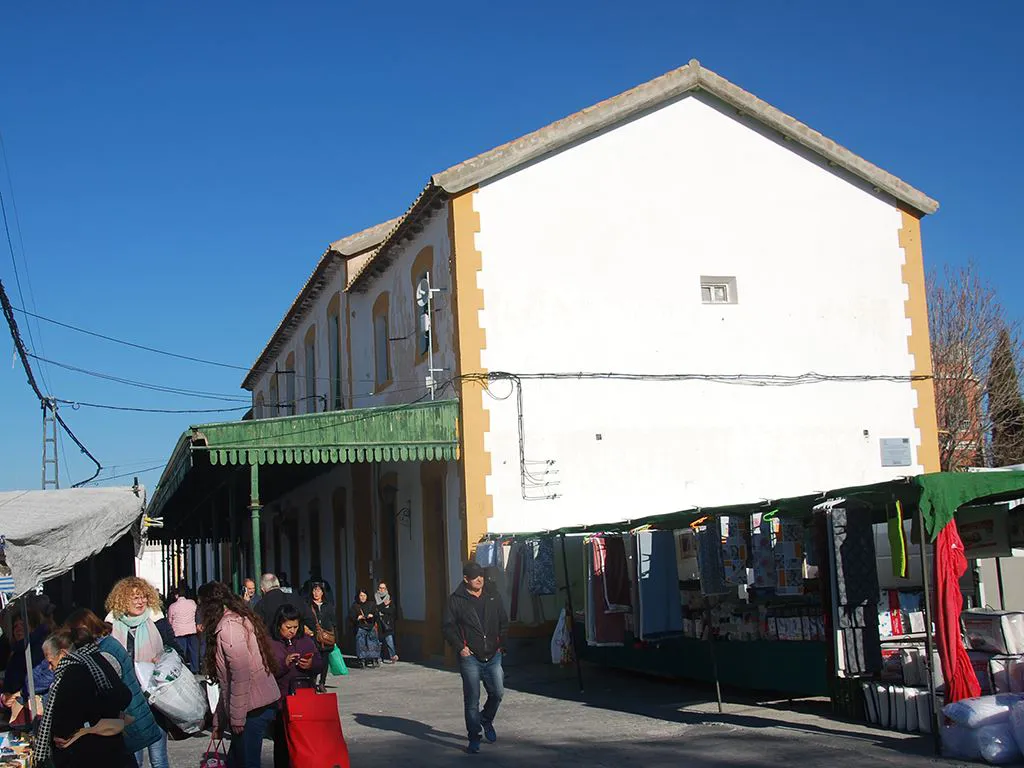
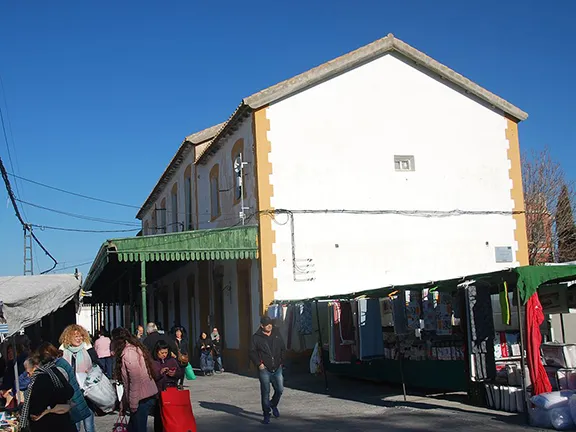
Baza station
The whole of the semi arid zone through which the GSSR passes is prone to sudden and tempestuous storms that result in flash floods in the barrancos and ramblas.
Ironically, the area is normally chronically short of water, but every few years it rains torrentially, and localised areas have too much water. So much that the ground, which was rock hard and dry, could not absorb the downfall. Even in normal years, repairs were needed annually to embankments, bridges and stretches of line that had been washed away or damaged by shorter but no less violent storms that can occur at any time of the year.
On the 15th March 1890, as a result of days of very heavy rain a cutting, which is now the Las Cañadicas tunnel, collapsed. Sadly, at about 6pm, a lady from Albox called Leonor Berbel Sánchez was in the cutting at the time and was killed. The cutting was later converted to a tunnel.
On the 26th June 1900, only seven years after it was built, the Albox Bridge lost its two central spans of 80 metres that were 5 metres above the river floor , due to disastrous flooding.
These tremendous storms, that could be years apart, caused spasmodic disruption to the railway line. On the 8 September 1955, after a deluge and flooding, one of the two 30 metre spans of Río Valcabra Bridge near to Caniles was washed away. A train was stopped by a worker, preventing it from falling into the void. The bridge, originally built in 1892 was rebuilt and re-opened on 1st October 1955 only 22 days after the disaster.
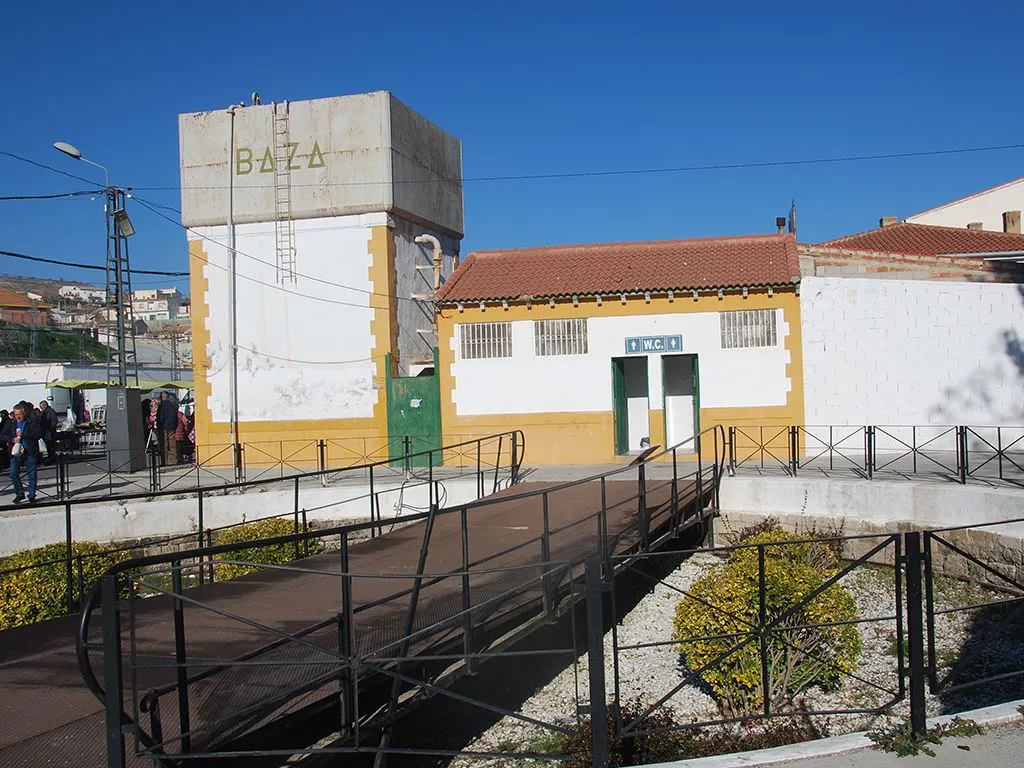
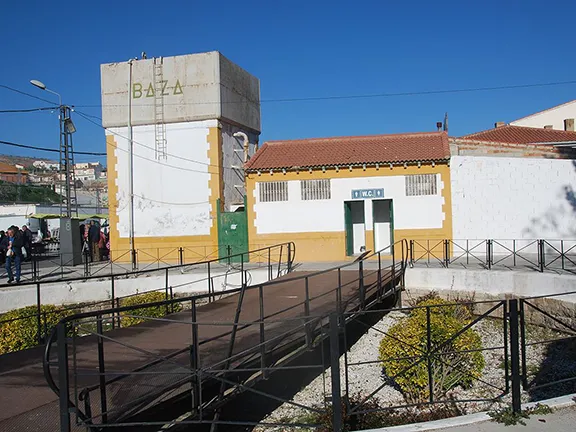
Turntable at Baza station
Catastrophic storms still occur, as late as the 15th November 1985 The driver of a modern diesel train at Pulpi, Adolfo Sánchez López; relates his story:
“During an incredible storm with torrential rain and destructive wind, I managed to get to the train and start it. With me in the cab was Bonfacio from Ways and Works who wanted to inspect the cuttings and embankments for damage. In one of the tunnels there was a huge thud when we hit a loose stone. On arrival at Pulpí it was still pouring. It was then that I noticed that the snow guard was somewhat bent. The journey to Alicante and back saw torrential rain such that I had to drive at reduced speed. On leaving the No 1 (Km14) tunnel the accident happened by hitting a boulder that had rolled down onto the track due to the rain. I broke my nose and in applying the emergency brake, I broke four fingers of my right hand. Fortunately, there were no other serious injuries. The telephone didn't work so we had to evacuate the passengers through the quarry to be taken by two buses from Jaravía Station”.
And so, on the 16th December 1894, 133 kilometres from Lorca, we reach the end of the line for the Great Southern of Spain Railway Company Ltd., Baza station.
This was an important station for the GSSR, Baza was the first town of any size on the line since Lorca. They were able to operate more passenger coaches as well as transporting more manufactured products. After the Nuestra Señora de las Mercedes factory at Caniles opened in 1910, the line transported sugar beet to Caniles.
In 1866, anticipating the Great Southern of Spain Railway between Baza and Aguilas, a contract was made between Robert Cheney Johnston and Miguel María José Carvajal Tellez de Giron, Duke of Abrantes y Linares, Count of Águilar, to farm esparto grass on a 27 square mile estate in Cortes de Baza, only 18 kilometres from Baza station. Prior to the opening of the railway, the esparto grass had been transported to the coast by donkey and ox cart. Needless to say the opening of the station at Baza was an eagerly awaited event.
Baza was also a hub for changing locos and minor repairs. There was a dormitory for rail workers and a turntable made by Cowans Sheldon Co, Carlisle.
The GSSR had run out of steam and money and the concession for the final section of line, from Baza to Granada, was sold to another company, the Granada Railway Company that had been formed only one month before, on the 16th November 1894.
Whilst Baza may have been the end of the line, it was not the end of this story.